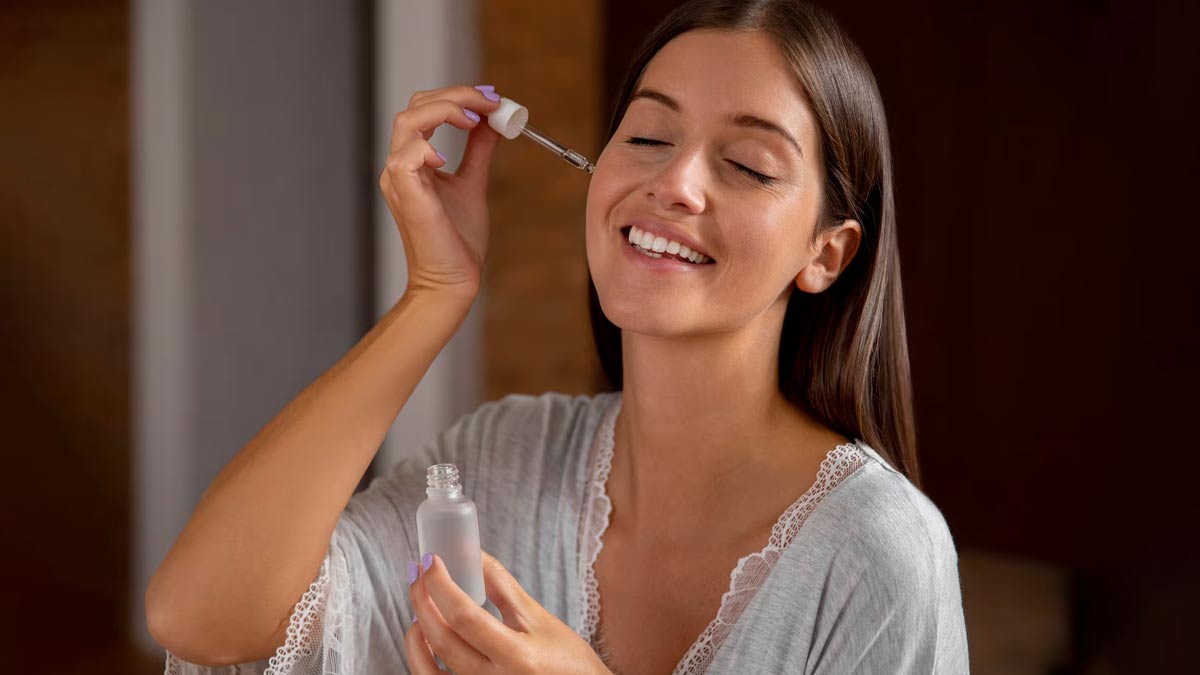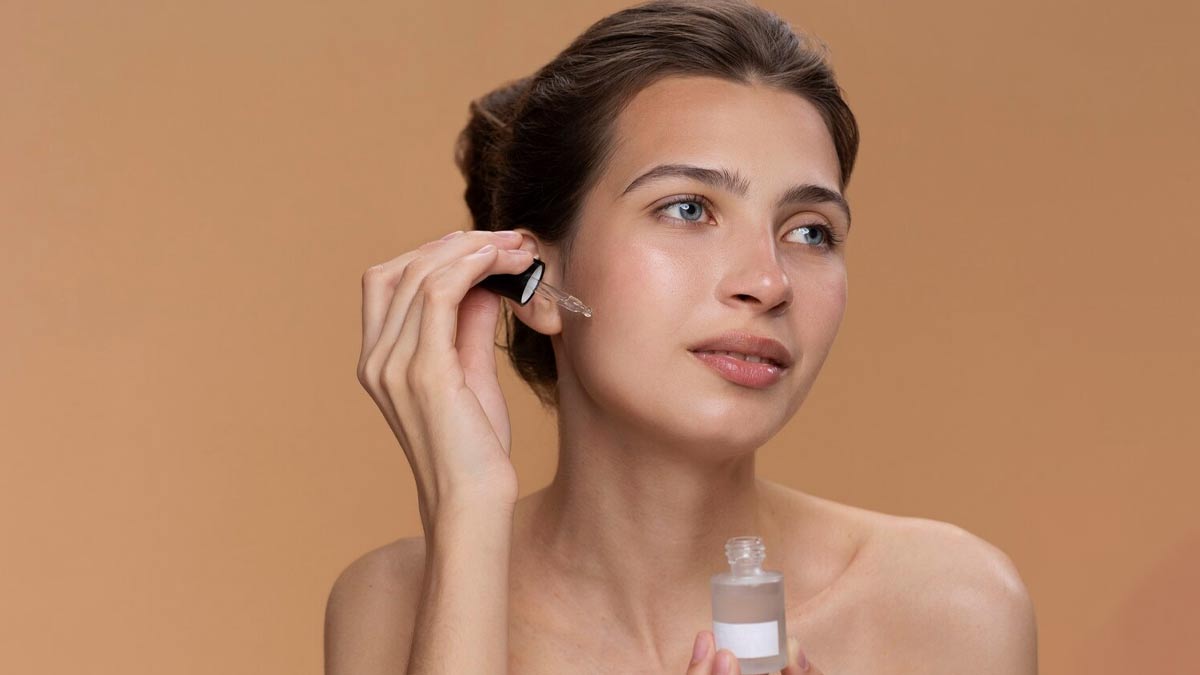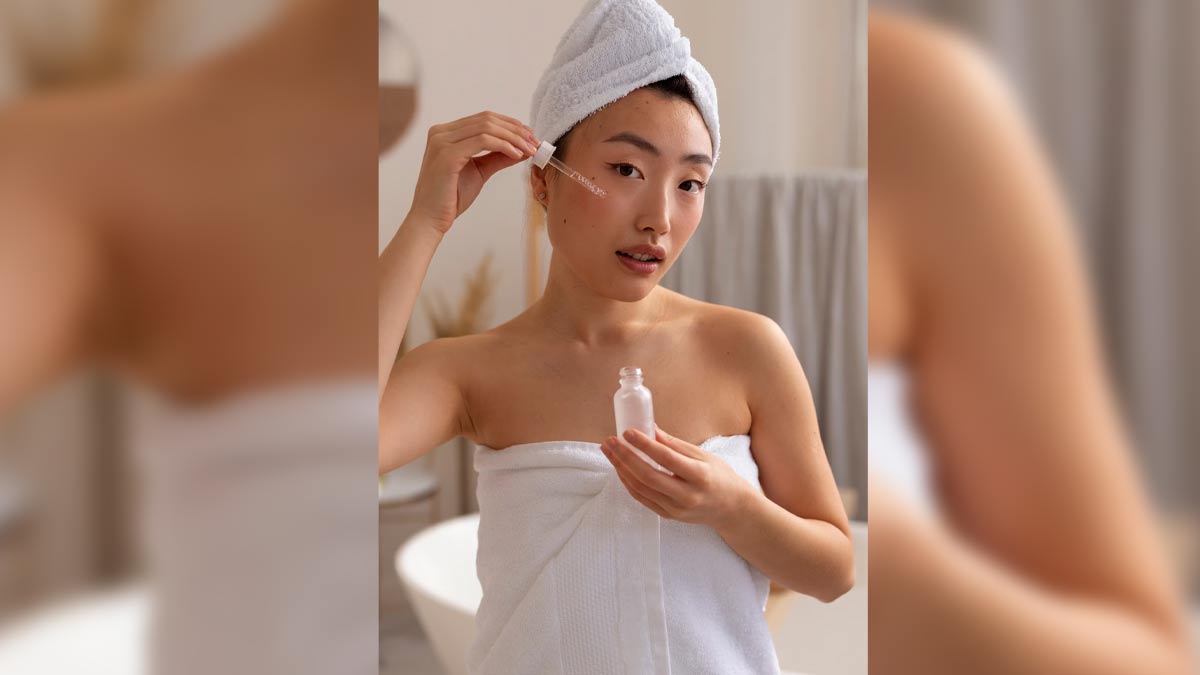
Who doesn’t want the luminous glow of sun-kissed skin around the day? Well, everybody does! But what if the one thing hindering your radiant skin and spotless shine is the incorrect use of skincare products? With the everyday launches of new and coming formulas and rising UV index, it is nearly impossible to judge which acids are best for your skin, as their interaction with sunlight can also lead to irritation and pigmentation.
Table of Content:-
Before diving into the world of skincare laced with acidic serums that can exfoliate, tone, and moisturise, it is important to learn what your skin truly needs. Putting every other ingredient on your skin might be doing more harm than good.
So, to break free from this dilemma, Dr Pragati Gogia Jain, Dermatologist, Apollo Hospitals Lucknow, has shared her valuable insights on how to choose the right acid for your skin this summer.
Best Acids For Summer![02]()
Before starting any skincare regimen in summer, it is important to learn that products take time to show effectiveness. Talking about the best acids to start using in summer, Dr Jain said, “The safest acids aren’t usually the most powerful ones. Maximum safety and maximum strength don’t go hand in hand. If you’re opting for summer-friendly acids, expect gentle, gradual results—not overnight transformation.”
That said, there are a few gentler, safer options that can still offer benefits during summer when used correctly and with sunscreen.
Most Summer-Friendly Skin Acids include:
Mandelic Acid (AHA)
- Why it’s safer: Larger molecule = slower penetration = less irritation.
- Great for: Oily and acne-prone skin.
- Benefits: Gentle exfoliation and helps reduce breakouts.
Lactic Acid (AHA)
- Why it’s safer: Less irritating than glycolic acid and more hydrating.
- Great for: Dry or sensitive skin.
- Benefits: Smoother texture, mild pigmentation fading.
ALSO READ: Skincare Ingredients That Can Reduce Dark Spots On Your Face
4 Acids to Avoid in Summer![serums for oily skin]()
During summer, the sun is harsh, and so is the UV index. This high UV index can lead to easier photodamage, meaning faster tanning and hyperpigmentation. Keeping this in mind, Dr Jain has shared four acids to steer clear of this summer.
Glycolic Acid (AHA)
- Why to avoid: It’s the smallest and most potent AHA, which means it penetrates deeply and significantly increases UV sensitivity.
- Risks: Redness, peeling, pigmentation if used without strict sun protection.
TCA (Trichloroacetic Acid)
- Why to avoid: Used in medium to deep chemical peels; too aggressive for summer.
- Risks: High chance of PIH and uneven healing in sun-exposed skin.
Citric Acid
- Why to avoid: Naturally derived from citrus fruits, it’s highly photosensitizing and can cause phototoxic reactions when exposed to UV light.
Retinoic Acid (Tretinoin)
- While not an AHA/BHA, it’s a potent exfoliant that increases cell turnover and UV sensitivity.
- Best reserved for nighttime use with extra sunscreen during the day, or skipped in peak summer months if sun exposure is unavoidable.
ALSO READ: What Not to Do to Your Hair in Humidity? Doctor Talks About Do’s and Don'ts
Precautions to Take While Using Different Serums
While choosing a skincare product with potent ingredients, it is paramount to implement proper precautions to avoid an inverse effect on the skin. Some of the precautions include:
- Use Acids Only at Night: Apply exfoliating acids in your PM routine to avoid direct sunlight exposure after application.
- Never Skip Sunscreen: Use a broad-spectrum SPF 30+, preferably SPF 50 if outdoors. Reapply every 2–3 hours if sweating or exposed to sunlight.
- Limit Frequency: Reduce acid use to 1–3 times per week instead of daily to avoid over-exfoliation. Choose gentler acids like mandelic acid, azelaic acid, or PHAs in summer.
- Avoid Other Irritants: Don’t layer acids with other actives like retinoids, vitamin C, or benzoyl peroxide unless advised by a dermatologist.
- Moisturize Generously: Maintain skin barrier with a non-comedogenic moisturizer to reduce sensitivity.
- Wear Physical Protection: Add wide-brimmed hats, sunglasses, and UPF clothing for added sun defense.
Skincare Practices to Include in Your Lifestyle![summer skincare for women]()
Adjust Frequency and Strength of Acids:
- Use mild acids (like mandelic, lactic, or azelaic acid) instead of stronger ones (like glycolic).
- Limit exfoliation to 2–3 nights/week to prevent over-irritation.
- Avoid layering multiple acids or combining with strong actives (like retinoids or vitamin C).
Make Acids Part of Your Night Routine
- Start with a short contact time, like 10–15 minutes for beginners, before leaving it on overnight.
Be Obsessive About Sunscreen:
- Use a broad-spectrum sunscreen SPF 50+ every morning, even indoors.
- Don’t forget to reapply every 2–3 hours if outdoors, sweating, or exposed to sunlight.
- Choose non-comedogenic, tinted sunscreens (they offer iron oxides, which protect against visible light–induced pigmentation).
Focus on Skin Barrier:
- Peeling from acids can lead to a broken skin barrier.
- To prevent that, use barrier-supporting ingredients like ceramides, panthenol (Vitamin B5), and niacinamide (also helps reduce pigmentation).
- Avoid harsh scrubs or drying face washes.
Hydration is Key:
- Incorporate hydrating toners/serums with hyaluronic acid, aloe vera, and glycerin.
- These ingredients help counter dryness or peeling from acids and also support healing.
ALSO READ: Back-Of-The-Neck Tan: How To Even It Out Without Bleaching
Conclusion: Glow Sensibly
Summers are meant to heal the skin from within by avoiding excess products. Layering isn’t ideal in summer, but keeping the routine simple is the aim. To put it in Dr Jain’s words, “The goal in summer isn’t aggressive peeling—it’s controlled, gentle exfoliation plus flawless photoprotection. That’s how you truly fade pigmentation without worsening it.”
Also watch this video
How we keep this article up to date:
We work with experts and keep a close eye on the latest in health and wellness. Whenever there is a new research or helpful information, we update our articles with accurate and useful advice.
Current Version



